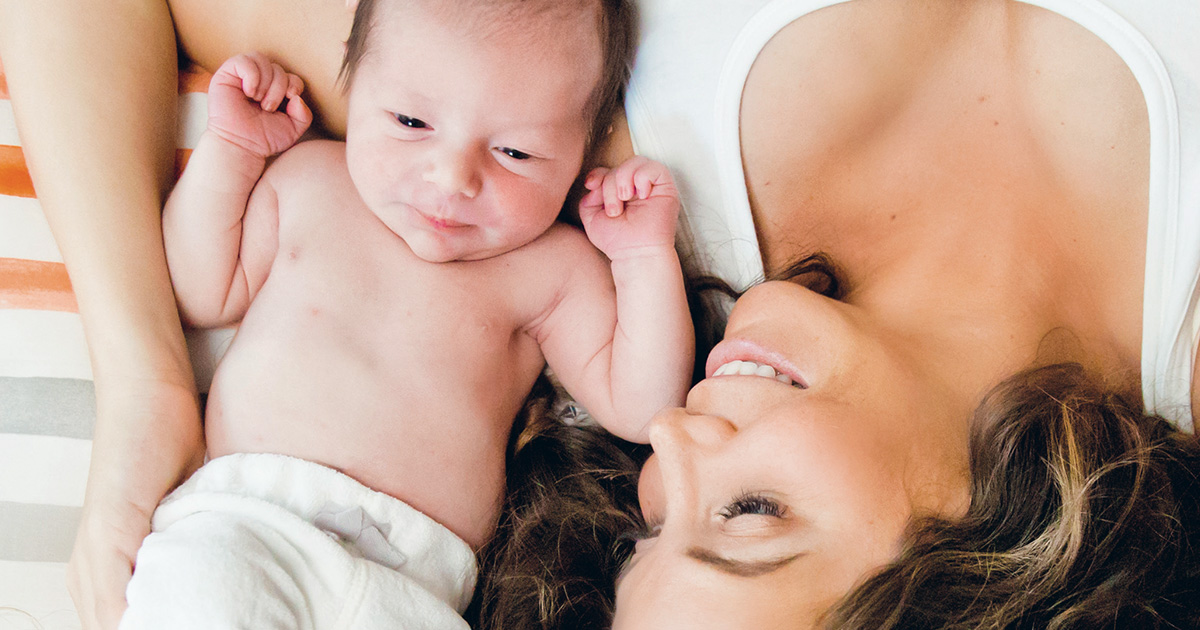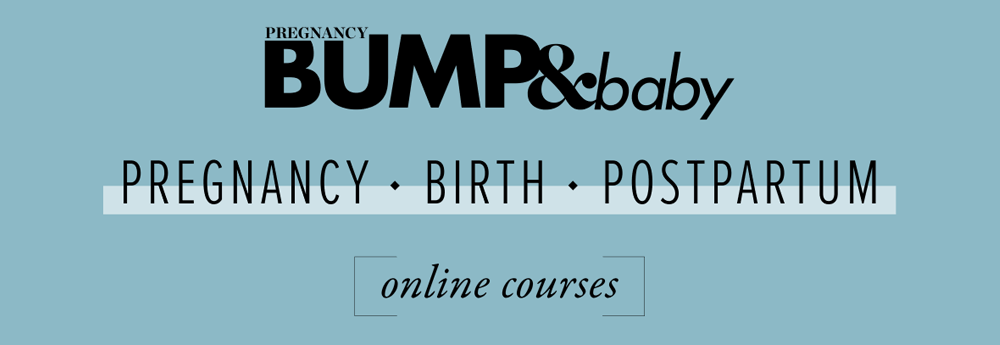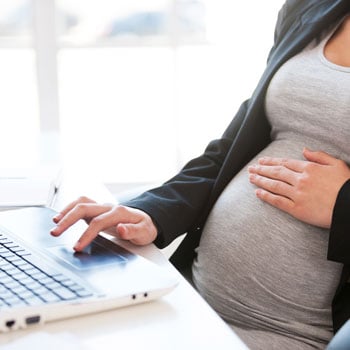
Ah, sleep, precious sleep — the holy grail for all new parents! It’s important to ensure you’re following safe sleep practices when it comes to your newborn, says Tiffany Brown.
Following the trauma of birth, it’s common for babies to sleep long and deeply for one or two days. Babies need to recover from the ordeal, and can be affected by medications or surgery used to assist birth. This should be a wonderful thing for a new mum who is desperately tired and ready for a big sleep herself! But in reality, most of us find it hard to ignore the rush of adrenalin-like new-baby hormones which have us absolutely buzzing from the job we’ve just done. Sleeping it off is often the last thing we feel like doing when we’d much rather gaze at our brand new bundle snoozing beside us. But the “fast asleep newborn” phenomenon can give new parents a false sense of the road ahead.
Start with feeding
Setting up a successful feeding relationship can help enormously with baby settling into a great sleep routine from the very start. As many midwives are known to recite: “If a baby’s tummy is full, baby will sleep.” Getting to grips with breastfeeding or managing bottle feeds can be all-consuming in those early days, taking up to an hour to feed baby in any one feeding session. And yet newborns can only cope with around 45 minutes of “awake time” before needing to have another round of sleep. Often the numbers simply don’t add up and both mother and baby (and dad, for that matter) are left frustrated, distressed, and exhausted.
Arm yourself with knowledge before your baby arrives, so you’re in the best position to get your baby feeding well and, subsequently, sleeping soundly beyond the first couple of days after birth.
At post-natal birthing units around the country, the accepted practice is to swaddle newborn babies, laying the, to sleep on their backs, separate to mum but close to the bed in a small cot. The marvellous midwives tend to make it look so easy. But you do eventually have to go home and manage without them. So, a few nights later, you find yourself blearily awake at 3am with a squawking infant (cluster feeding is probably beginning as your baby tries to get your milk to come in), looking at your partner in bewilderment as you take desperate turns trying to fashion a square out of fabric into something vaguely resembling the impeccably wrapped swaddle those midwives managed to wrap your baby in so effortlessly.
Back to sleep, please
Babies should be placed on their back for every sleep. After many years of research into SUDI (sudden unexpected death in infancy) and its likely causes and best methods of prevention, it is now well established that the “back to sleep” position is best. Babies breathe best when their face points upwards and the space around their head is clear. Placing them on their tummies can increase the possibility of suffocation. Sleeping on their side is also problematic due to the risk of rolling on to the stomach. It is suggested that the risk of SUDI may also be increased with tummy or side placement, because baby is breathing the “pocket” of air around their mouth which contains their exhaled gases. Recent research has also shown the areas of the brain which warn of impending danger are less developed in SUDI babies. This could be why they fail to wake up when oxygen supply is limited.
Space to snooze
One thing you can organise prior to baby’s arrival home from hospital is their sleep space. While it’s fine for newborns to go straight into a cot and it’s not necessary to sleep them in a smaller bassinette or Moses basket-style crib, these are lovely pieces for little ones if you can afford or have been lucky enough to inherit one. These units can also be a little more portable, offering freedom of sleeping location. The Ministry of Health currently endorses the pepi-pod (made from plastic) and whakawhetu (traditional flax-woven) sleep space products. Both are designed to offer vulnerable babies a safe sleeping environment during the first five months of life, while allowing for easy parental reassurance through close proximity and loving touch.
Co-sleeping
Co-sleeping refers to the “attachment parenting” style of sleeping a baby very close to their parents, particularly its mother. Fans of this style of sleep point to global cultures who have practiced co-sleeping in various forms for centuries, including “baby-wearing” in sling-style carriers during the day, and sharing beds at night. Research supports the idea that babies form more secure attachments when they are allowed to sleep in very close proximity to their parents. Secure bonds with caregivers can give children an increased sense of independence in the future, and reduced crying minimises the production of the stress hormone cortisol.
Safety first
However, there are potential hazards to co-sleeping. There are safety recommendations to follow if you plan to use a sling for sleeping your newborn during the day, particularly in terms of the appropriate fit for the adult wearing the sling, and guidelines for keeping baby’s face clear. The website slingbabies.co.nz is a fantastic resource for due diligence on slings prior to your due date.
When a baby sleeps in a bed with adults, there is a danger of suffocation of much larger adult bodies roll onto the baby during the night. These dangers can be avoided using an appropriate co-sleeping bassinette. These units attach to the side of your bed, effectively “widening” the bed and creating a separate space for baby to sleep securely, while maintaining close proximity. The risks of co-sleeping can be further minimised by ensuring adults never sleep in the same room as baby if they are intoxicated by alcohol, drugs, or medications, by keeping the house smoke-free at all times, and by breastfeeding baby exclusively until around six months of age.
Dress appropriately
Dressing baby appropriately for the season and monitoring room temperature can also play a vital part in ensuring good sleep. Newborns are unable to regulate their own body temperature. Don’t rely on feeling the limbs to judge their comfort; this can mislead you as the circulatory system is not yet well developed. Instead, feel your baby’s chest or back, under their clothes for temperature — you’ll know if they are feeling too cold or too warm
Bedclothes for infants should be tightly fitted to the mattress, with no loose fabric, trims, or embellishments that could trap or strangulate your baby. To make the sleeping space warmer in the cooler months, put extra blankets underneath the sheet rather than over the top of baby, as movement and kicking during sleep can dislodge covers and leave your baby cold. Many parents prefer sleeping bags for babies. These are available in various weights for different seasons to keep your little one cosy and warm.
Clothing that keeps your baby comfortable is often defined as one more layer than you would wear during winter, and one less layer during summer. This rather arbitrary suggestion can leave you confused. Keeping a close watch on your baby’s level of contentment, along with feeling their chest and back, and experimenting with various combinations of layers of clothing when there is no other obvious reason for distress may be more reliable. The ambient temperature of your baby’s immediate sleep environment should be around 20 degrees Celsius. If your home is not air-conditioned, get a thermometer to monitor the temperature and adjust with the use of windows, heaters or fans as necessary.
BUMP&baby
BUMP & baby is New Zealand’s only magazine for pregnancy and early babyhood. Our team of mums and mums-to-be understand what it’s like to be pregnant in this connected age, and that’s why BUMP & Baby online is geared toward what pregnant women and new mums really want to know.
Other articles of interest
Maternity leave: 8 essential questions answered
Parental leave entitlements can be a bit confusing. Here’s a quick guide to what you need to know.







